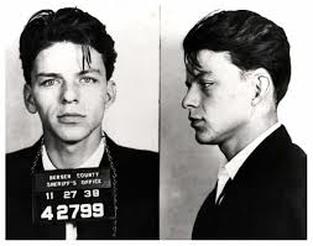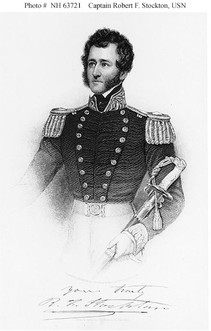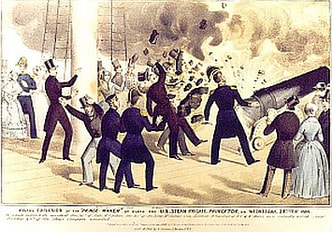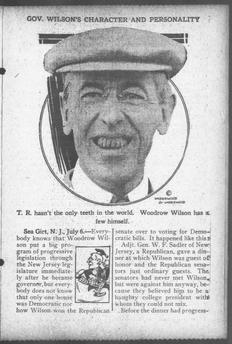-- New Jersey Biographies S-Z
|
* Home
* History * Population * Government * Politics * Lobbyists * Taxes * State Symbols * Biographies * Economy * Employers * Real Estate * Education * Recreation * Restaurants * Hotels * Health * Environment * Stadiums/Teams * Theaters * Historic Villages * Historic homes * Battlefields/Military * Lighthouses * Art Museums * History Museums * Wildlife * Climate * Zoos/Aquariums * Beaches * National Parks * State Parks * Amusement Parks * Waterparks * Swimming holes * Arboretums More... * Gallery of images and videos * Fast Facts on key topics * Timeline of dates and events * Anthology of quotes, comments and jokes * Links to other resources * |
 In military uniform circa 1945. Image: Sarnoff Collection, The College of New Jersey In military uniform circa 1945. Image: Sarnoff Collection, The College of New Jersey
David Sarnoff 1891-1971 Radio and television broadcasting pioneer. Born to poor Jewish family in Belarus, emigrated in 1900 to New York City, as boy sold newspapers to help support family, at age 15 left school to work full-time when father contracted tuberculosis. Hired at $5.50 a day as office boy at Commercial Cable Company, then joined Marconi Wireless Telegraph Company of America in 1906. Promoted from office boy eventually to commercial manager of company, learned technology of electronic communications at work and by reading in libraries, also served at Marconi stations on ships and on land. In 1911, installed and operated wireless equipment on ship in North Atlantic and in next year led effort to confirm fate of Titanic. Company revenues grew after federal legislation required continuous staffing of commercial shipboard radio stations. Named Marconi's Commercial Manager, including oversight of company's factory in Roselle Park. In 1915 or in 1916, proposed that company develop a "radio music box" for "amateur" market of radio enthusiasts. Remained with company through later purchase by General Electric (which was urged by government to acquire and consolidate independent radio firms to enhance national security) and renaming as Radio Corporation of America, successful broadcast of heavyweight championship match in July 1921 sparked consumer demand for home radios. In 1926, RCA launched National Broadcasting Company, first radio network in America, with Sarnoff named president four years later. In 1929, RCA purchased Victor Talking Machine Co., nation's largest manufacturer of records and phonographs, merging radio-phonograph production at Victor's large manufacturing facility in Camden. In 1932, in settlement of antitrust case, RCA spun off by GE as independent firm headed by Sarnoff. Pioneered development of television, personally hosted first television broadcast April 1939 of dedication of RCA pavilion at New York World's Fair under name of RCA broadcasting division, The National Broadcasting Company (NBC). RCA became leader of manufacturing and marketing sets and NBC became first television network, gradually expanding its stations from initial site in New York and Philadelphia. During World War II, served on General Dwight Eisenhower's communications staff in establishing radio network for allied forces in Europe which became Radio Free Europe, at end of war awarded star as Brigadier General which led to becoming called "General Sarnoff." Subsequently advocated expansion of Radio Free Europe and creation of Voice of America to advance US positions during Cold War with Soviet Union. In 1950s, oversaw RCA's development of color television sets and NBC's color broadcasts. Received 27 honorary degrees, including doctoral degrees from Columbia University and New York University. Died at age 80, year after retirement, son Robert succeeded him as RCA chairman. David Sarnoff Library and Museum formerly at Sarnoff Laboratories near Princeton, in 2010 collection of 6,000 artifacts donated to The College of New Jersey while papers, memorabilia and 25,000 photographs given to Hagley Museum and Library in Wilmington, Delaware. * The General: David Sarnoff and the Rise of the Communications Industry by Kenneth Bilby (1986) * The Last Lone Inventor: A Tale of Genius, Deceit, and the Birth of Television by Evan I. Schwartz (2002) * The Sarnoff Collection, The College of New Jersey * Sarnoff Library Project, Hagley Museum and Library  Image: Seabrook Brothers and Sons Image: Seabrook Brothers and Sons
Charles F. Seabrook
1881-1964 Pioneered quick-freezing of vegetables through use of ammonia, began freezing vegetables for General Foods, and in 1943, started selling under own Seabrook Farms brand. In 1911-12, bought out his father, Arthur P. Seabrook, farmer who was first to use overhead irrigation and a gasoline tractor. Expanding on father's property, built two railroads, power, ice and canning plants, six greenhouses and a storage facility. Constructed village of homes and schools adjacent to farm for workers and families. In 1934, workers struck for higher wages, violence provoked national newspaper coverage. Seabrook Farms became one of largest producers of frozen vegetables in world, workers included refugees from foreign persecution as well as Japanese-American internees assigned to work during World War II. Losses due to hurricane in 1954 and conflicts within Seabrook family resulted in sale of company to wholesale grocery firm in 1959. Subsequently, two of Charles F. Seabrook’s grandsons bought back property and revived business under name of Seabrook Brothers and Sons, annually freezes 150 million pounds of vegetables . * The Henry Ford of Agriculture: Charles F. Seabrook 1881-1964 and Seabrook Farms 1893-1959 by John M. Seabrook (1995) * Seabrook Brothers and Sons |
 Image: Womanspace Image: Womanspace
Barbara Boggs Sigmund
1939-1990 Born in New Orleans, daughter of Democratic Congressman Hale Boggs, serving as House majority leader in 1972 when passenger on plane that disappeared on visit to Alaska, mother Lindy Claiborne Boggs succeeded late husband in House, held seat for another 20 years. Mother's family, the Claibornes, settlers in colonial Jamestown in Virginia, descendants include more members of Congress than any other American family. Sister of media analyst and commentator late Cokie Roberts and prominent lawyer-lobbyist late Thomas Boggs. After graduation from Manhattanville College, worked as secretary in White House during Kennedy Administration. In 1964 married Paul Sigmund, professor of Latin American government and politics at Princeton. Taught Latin and government at private Stuart Country Day School in Princeton. In 1974, staff member at Center for the American Woman and Politics at Eagleton Institute at Rutgers University. Elected 1976 to Mercer County Board of Freeholders, board president in 1979 and 1980. One of founders in 1977 of Womanspace, shelter and support program for women and their children subjected to sexual assault and domestic violence. In 1982, candidate for Democratic nomination for US Senate, finished fourth in field of 10 candidates. First woman elected mayor of Princeton in 1983, previously served on Princeton Borough Council, candidate for 1989 Democratic gubernatorial nomination, finished second to James Florio. After death from cancer at age 51, Womanspace began annual Barbara Boggs Sigmund Award honoring those championing causes and issues affecting women and children; Princeton University established Barbara Boggs Sigmund Symposium on Women and Poverty; Princeton municipal government named local park after her. * "Barbara Boggs Sigmund, Mayor Of Princeton and Ex-Teacher, 51," New York Times, October 11, 1990 |
 Image: Library of Congress Image: Library of Congress
Richard Stockton
1730-1781 Prominent Revolutionary lawyer and leader, signer of Declaration of Independence. Following Declaration of Independence, initial vote of New Jersey assembly for first governor of new state resulted in tie between Stockton and William Livingston, with Stockton withdrawing as candidate after being informed of vote and Livingston elected on second ballot. Stockton also rejected appointment as chief justice of state supreme court, continued as delegate to Continental Congress. Member of first graduating class of College of New Jersey (now Princeton University) in 1748 when it was still located in Newark, his father donated money and land for college to relocate to Princeton. Studied law under David Ogden of Newark, became successful lawyer with one of largest practices in colonies, in 1750s built home named Morven on land in Princeton originally acquired by family from William Penn. Married Annis Boudinot in 1757, following marriage two of her brothers became apprentices studying law under him, father Elias Boudinot, later signer with Stockton of Declaration of Independence and president 1782-83 of Continental Congress. Also in 1757 traveled to Scotland to successfully recruit John Witherspoon to accept appointment as new president of College of New Jersey. Appointed to royal council of New Jersey in 1765, first argued for colonial representation in Parliament but withheld support for independence. In 1774 appointed a justice of New Jersey supreme court. Eldest daughter Julia married Dr. Benjamin Rush in January 1776, later signed Declaration of Independence as delegate from Pennsylvania and head physician for Washington's army during battles at Princeton, Monmouth, others. Elected 1776 as delegate to Continental Congress with instructions to vote for independence and signed Declaration. In November 1776, Morven seized by British and Stockton captured, imprisoned under harsh treatment by British, released after Congress passed resolution directing George Washington to write letter protesting to General Howe and Stockton allegedly signed loyalty oath to King, then after being freed by British, again jailed by revolutionaries as accused traitor for five weeks, health deteriorated until released on parole. Returned to Morven, which had been occupied by General Cornwallis during Stockton's imprisonment, with destruction or theft of household furnishings, books, crops and livestock. Resumed law practice and taught new students. Two years after release from jail developed cancer, died on February 28, 1781. Stockton University (formerly Richard Stockton College) in Galloway Township named for him. * Richard Stockton, The Society of the Descendants of the Signers of the Declaration of Independence * Richard Stockton, ColonialHall.com |
|
|
|
|

Theodore C. Wheaton
1861-1931 Physician trained as pharmacist who settled in Millville in 1883. In 1888 bought controlling interest in small factory making glassware used by pharmacists, including laboratory vials, which became T.C. Wheaton Co. Products soon marketed to scientific laboratories, chemists, perfumers, and physicians, gave up medical practice to run business full-time in 1890. Bought 25 square blocks in Millville for expansion, at peak 41 factories throughout US and subsidiaries in 20 other countries. After death in 1931, son Frank and grandson Frank Jr. successively ran company. With introduction of plastics in 1950s, developed and built world's first commercial injection blow molding machine for plastic, expanding markets in cosmetics and pharmaceutical packaging. Remained in family control until sale in 1996, now known as Wheaton Industries. Grandson founded in 1968 Wheaton Village (now Wheaton Arts and Cultural Center), non-profit living museum and artisan colony in Millville, features demonstrations and exhibits of glassmaking. Vintage bottles, several with silhouettes of historic figures or symbols, remain valued collectibles. * History of Wheaton Industries, ReferenceforBuiness.com * T.C. Wheaton Glass Company, Old Glass Bottles and Pieces of Antiquity |
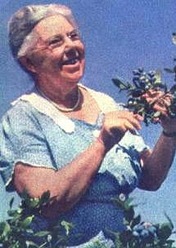 Image: Elizabeth Coleman White, Blueberry Queen Image: Elizabeth Coleman White, Blueberry Queen
Elizabeth Coleman White
1871-1954 Along with Frederick Coville, chief botanist of US Department of Agriculture and first director of National Arboretum, developed nation’s first cultivated blueberry, foundation of commercial blueberry industry. Daughter of head of family cranberry business, J.J. White, Inc. on 600-acre cranberry farm in Whitesbog in Pine Barrens. After reading article by Colville on blueberry propagation, in 1911 invited him to come to farm to continue research, helped locate wild blueberry bushes with desired traits; asked woodsmen about berry size, resistance to cold and disease, flavor and time of ripening. Coville cross-fertilized bushes by hand to create new berry varieties. By 1916, White and Colville had created first commercial crop of blueberries, in 2014 New Jersey ranked fifth of states (Georgia #1) with $79.5 million in blueberry production. White helped organize New Jersey Blueberry Cooperative Association in 1927, also pioneered use of cellophane in packaging blueberries. First woman member of American Cranberry Association. Also active in promoting native American holly, formed Holly Haven, Inc. and helped found in 1947 Holly Society of America. * Elizabeth Coleman White, Distinguished Women of America * Elizabeth Coleman White, Blueberry Queen * 2014 Blueberry Statistics, US Department of Agriculture |
|
